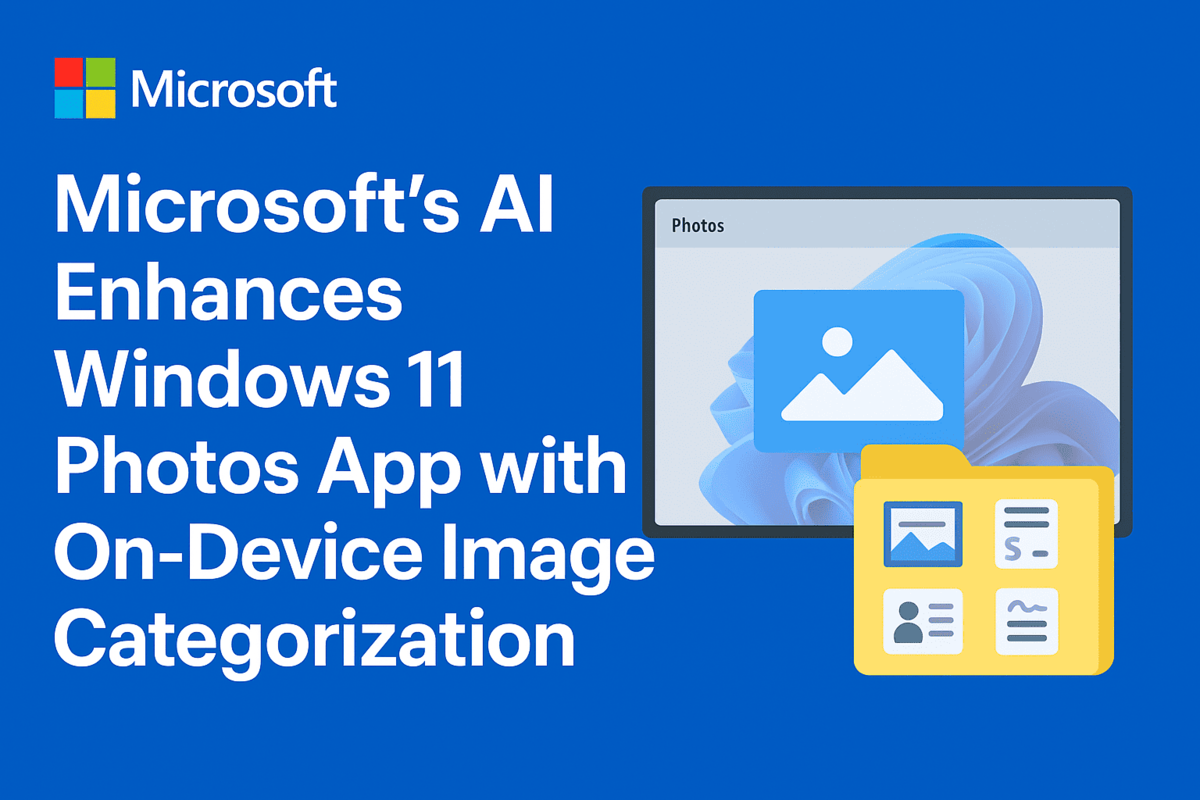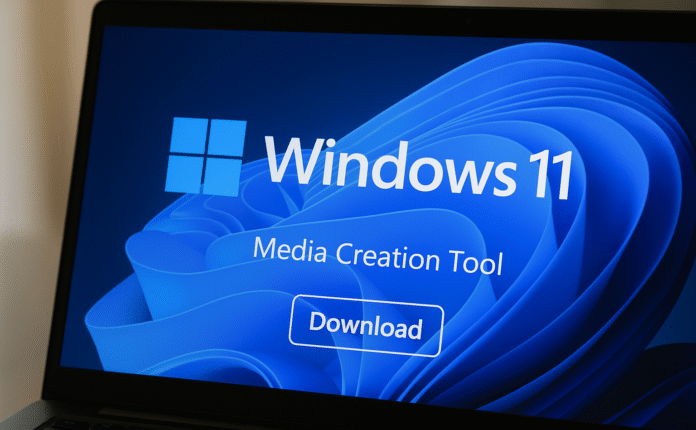
Introduction: Microsoft’s Expanding AI Vision
Microsoft has officially taken another major step in its AI strategy by enhancing the Windows 11 Photos app with on-device AI categorization tools. This development, announced in September 2025, reflects Microsoft’s vision of making everyday tasks simpler, smarter, and more secure through artificial intelligence.
With digital libraries overflowing with screenshots, receipts, and miscellaneous documents, users have long struggled to stay organized. Now, Microsoft’s AI promises to take on the tedious work of categorizing these images automatically—running entirely on-device for maximum privacy.
This update is more than a convenience feature. It signals a paradigm shift toward ambient intelligence, where digital systems handle background tasks without user intervention. It also places Microsoft at the center of a growing industry trend—bringing AI closer to the edge rather than relying solely on the cloud.
How Microsoft’s AI Photo Categorization Works
The new feature leverages neural processing units (NPUs) embedded in Copilot+ PCs, particularly those powered by Qualcomm’s Snapdragon X Elite and Plus processors. NPUs specialize in AI inference, enabling the Photos app to analyze images in real time with minimal power consumption.
The AI model automatically assigns photos into categories such as:
- Screenshots: Captures from games, browsers, or software.
- Receipts: Digital or scanned purchase confirmations.
- Identity Documents: Driver’s licenses, passports, or ID cards.
- Notes and Handwriting: Quick snaps of whiteboards, sticky notes, or notebooks.
What makes this system unique is that it is language-agnostic. It doesn’t rely solely on text recognition but instead uses advanced image classification, ensuring accurate results even when documents are written in different languages or contain minimal text.
Privacy First: Why On-Device AI Matters
Unlike many competing solutions that depend on uploading images to the cloud, Microsoft’s Photos app performs categorization entirely on the device. This means:
- Stronger privacy: Sensitive documents such as receipts or IDs stay local.
- Regulatory compliance: Enterprises concerned with GDPR or local data laws can trust that documents won’t be transmitted externally.
- Faster performance: Processing happens in real time, reducing lag and avoiding bandwidth issues.
This design philosophy reflects Microsoft’s commitment to responsible AI. At a time when cloud security and AI ethics dominate the public conversation, on-device AI offers peace of mind to both consumers and businesses.
Hardware Exclusivity: Why Copilot+ PCs Matter
For now, the feature is restricted to Copilot+ PCs, which are marketed as Microsoft’s AI-first devices. By tying features like image categorization to specialized hardware, Microsoft is driving demand for its next-generation laptops.
Industry analysts view this as a strategic move in a sluggish PC market. Unlike traditional PCs, Copilot+ models promise tangible AI advantages—offering a reason for consumers and enterprises to upgrade.
Competitors such as Apple and Google have leaned heavily on cloud AI for similar features. Microsoft’s decision to push edge AI instead could give it a competitive advantage, especially for privacy-conscious users.
Expanding Beyond Documents: The Future of AI in Photos
Currently, the categories are practical, focused primarily on organizational pain points like receipts and screenshots. But Microsoft has bigger plans.
Possible future expansions include:
- Family albums: Automatic grouping of birthdays, weddings, or vacations.
- Events and trips: AI could link photos with calendars or emails to create event-based albums.
- People recognition: Detecting and grouping faces for easy navigation.
- Smart search integration: Querying photos using natural language, e.g., “Find all my hotel receipts from Paris.”
Integration with Microsoft Designer and other AI-powered creative apps is also expected, giving users one-click editing and enhancement options.
Early Feedback from Testers
Windows Insiders who have tried the new feature are already reporting positive experiences. On X (formerly Twitter), Insider Program participants praised the automation and accuracy, noting how it significantly reduces the burden of manual file management.
One tester wrote: “My photo library finally feels manageable. I didn’t realize how many random screenshots I had until the Photos app sorted them automatically.”
Key Benefits for Users
Microsoft highlights several benefits of this AI-powered categorization:
- Saves time: Eliminates hours of manual sorting.
- Reduces clutter: Keeps screenshots and receipts separate from personal memories.
- Boosts productivity: Makes documents easier to find for work or personal use.
- Enhances security: Sensitive files never leave your PC.
- Improves accessibility: Works across languages without requiring OCR-only detection.
Challenges and Limitations
Despite enthusiasm, several obstacles remain:
- Limited rollout: Only users on Copilot+ PCs with Snapdragon NPUs can test it today.
- Accuracy issues: Misclassifications may occur, especially with low-quality or handwritten content.
- User adoption: Some may resist upgrading hardware just for software features.
- Market fragmentation: Older Intel and AMD systems may lag behind if Microsoft doesn’t expand compatibility.
Competitive Landscape: Microsoft vs. Apple and Google
Apple’s iCloud Photos and Google’s Photos app have long offered categorization, but primarily through cloud AI models. Microsoft’s decision to keep everything on-device positions it as a leader in privacy-first photo management.
- Apple: Prioritizes ecosystem integration but still leans on cloud sync.
- Google: Offers powerful cloud AI but raises data privacy questions.
- Microsoft: Combines AI power with enterprise-grade privacy protections, giving it a unique selling point.
Analysts predict that this could sway business users who must handle sensitive files without risking data leaks.
AI as a Selling Point for the PC Market
The PC industry has struggled with declining sales for years, but Microsoft sees AI as the catalyst for a rebound. By limiting key features to Copilot+ PCs, Microsoft is betting that consumers will upgrade for AI capabilities.
If successful, this strategy could reshape the PC market, turning hardware upgrades from optional to essential. Instead of buying new laptops for performance alone, users may seek them for AI-driven features.
The Broader AI Roadmap for Windows
Microsoft has made AI a central theme of its Windows ecosystem:
- Windows Copilot offers natural language assistance across the OS.
- Office apps include AI-powered editing, summarization, and design.
- Edge browser integrates with Bing Chat for contextual intelligence.
The Photos app is just one piece of this puzzle. Together, these features push Microsoft toward its ultimate goal: making Windows the most intelligent and user-friendly operating system available.
Conclusion: From Photo Storage to Intelligent Management
The new AI categorization feature in Windows 11 Photos is more than a minor update. It’s a proof of concept for how Microsoft envisions the future of computing—where AI works quietly in the background to reduce clutter, improve organization, and enhance privacy.
While limitations remain, including hardware exclusivity and potential accuracy issues, the long-term implications are clear. This is the beginning of a new era in which AI is not just a productivity tool but an essential part of everyday computing.
For now, Copilot+ PC owners get a glimpse of that future. For everyone else, the message is equally clear: AI is coming, and Microsoft intends to lead the way.
